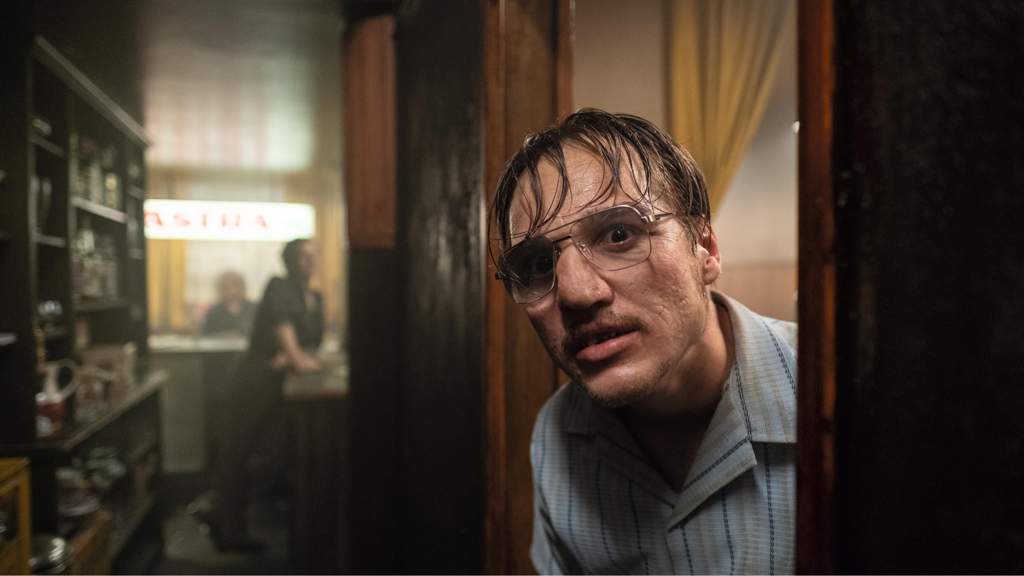Find some hand sanitizer and plenty of pine tree shaped air fresheners ready after this one.
Faith Akin’s The Golden Glove is sure to offend virtually every sense as we follow the whereabouts of German serial killer Fritz Honka who killed at least four women in Hamburg’s red light district (also known as the most sinful mile). It’s already divided critics leaning on the side of it being trash, and while Honka certainly lived as such, Akin turns Honka’s story into a hidden gem that has more in common with Cheers than Netflix fare like Mindhunter or Extremely Wicked, Shockingly Evil and Vile.
Unlike many serial killer studies, it’s hardly concerned with solving the case. Or understanding Honka for that matter. There’s only one newspaper shown after the film’s opening serial act that partially shows Honka raping, killing, dismembering, and discarding his first victim.
While that may sound like Akin revels in the sty Honka which creates and willingly, he’s more interested in fully showcasing Honka’s sad life. That could easily be misunderstood for sympathy or empathy as it does a mighty good job at showing how pathetic a life Honka lived.
But it’s everything that’s off-screen that continues to make it such an engaging picture.
All of Honka’s crimes are committed in only partial view. The right side of the frame hides where Honka’s saw cuts into his first victim. The view of his bed is divided in half by his wall plastered with porn that he uses to stay aroused — this may be the only statement Akin implies, suggesting Honka was not sexually stimulated by violence.
Akin also doesn’t show the circumstances in which Honka grew up in poverty, unwillingly to suggest that created him. The only family we see is his brother coming by his apartment once, and more than revel Honka’s personality or development, Akin spotlights the brothers’ view of women as property as Honka has created a contract with a homeless woman so that he has access to her daughter.
There are no monologues or motivations, just a painful existence that infects some unfortunate souls.
To that end, it’s all presented around the titular bar, the Golden Glove which is occupied by a half dozen or so regulars. They all have nicknames. They all tease each other’s rugged faces, and Honka is no different. It’s like a bizzaro Cheers where instead of Cliff shrugging of being rebuffed by women with a joke despite his need to be womanizer like Sam, he goes out and hunts other lonely prey.
Consistently bracketing Honka’s crimes and life failures positions the whole saga for a line of pay off where someone says “normal people go in there.” Honka is an abnormal, sick person but among a crowd, he’s just another face however strange he may be. That’s the real horror Akin invokes opposed to replicating so many stories before it.
Beyond presenting Honka’s pathetic life as just that — pathetic — there are only a few rare moments of criticism, but none more shattering than the irony of a potential victim telling her husband that “You can’t force someone to have fun.” Meanwhile, Honka forces people to do more than just have fun.
That’s all the more developed by Jonas Dassler’s properly wretched performance enhanced by prime prosthetics. He too can be accused of being too sympathetic, whereas his performance comes off more as surprisingly lived-in with the exquisitely dirty set and cinematography. It just overstay its two hours of being on screen.
Overall Grade: 6.5 out of 10


